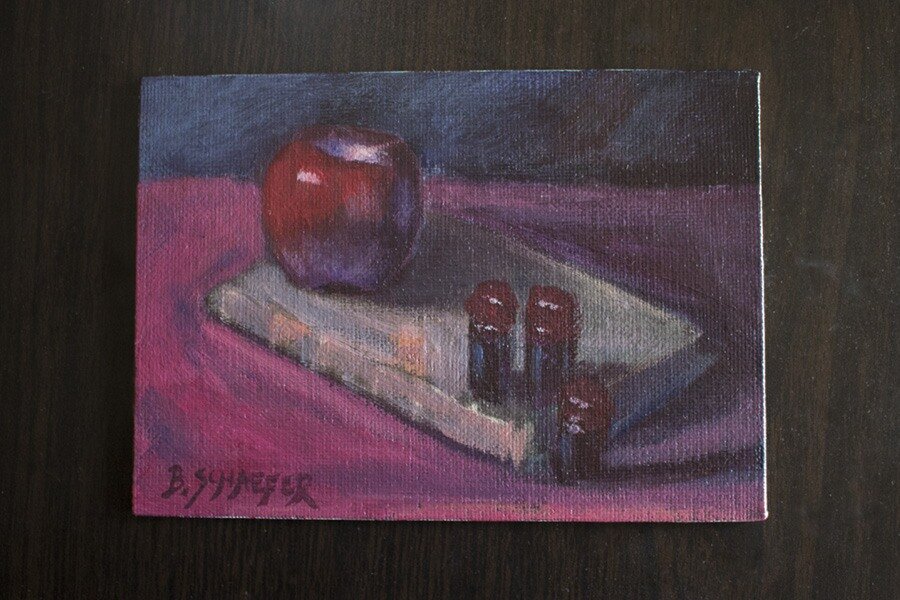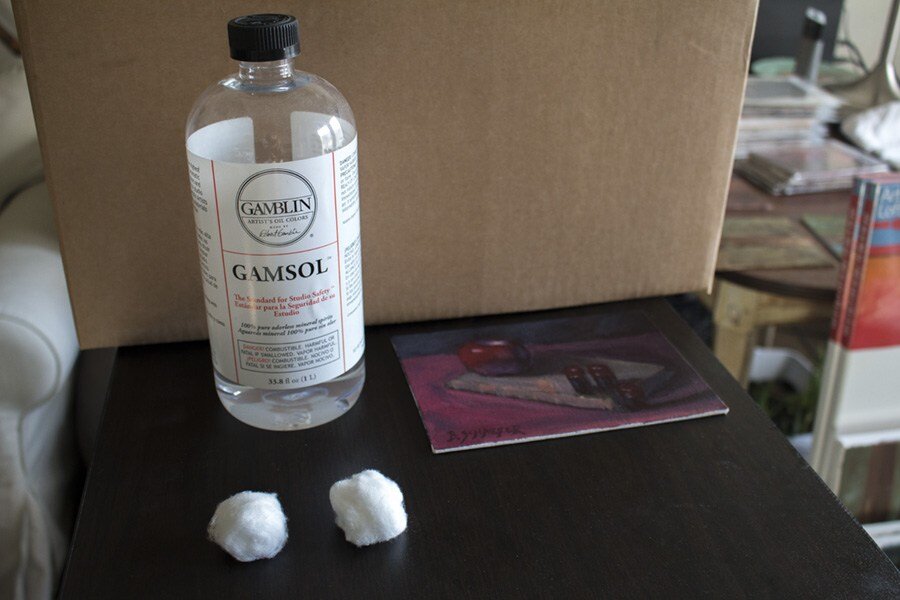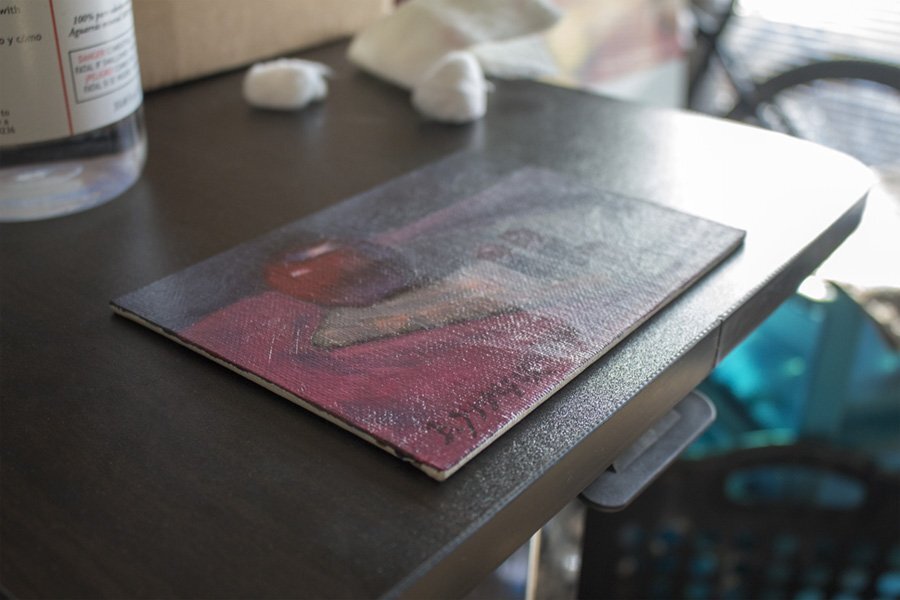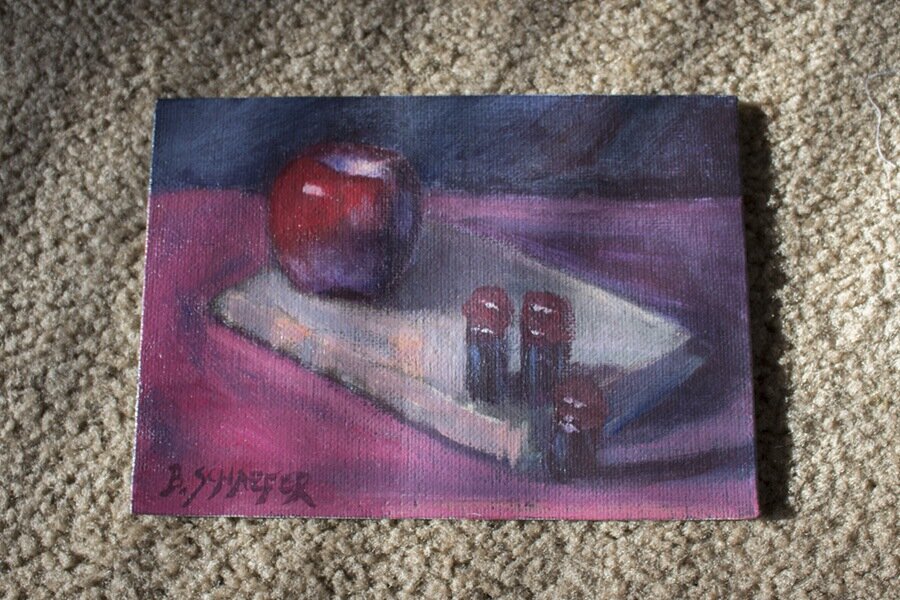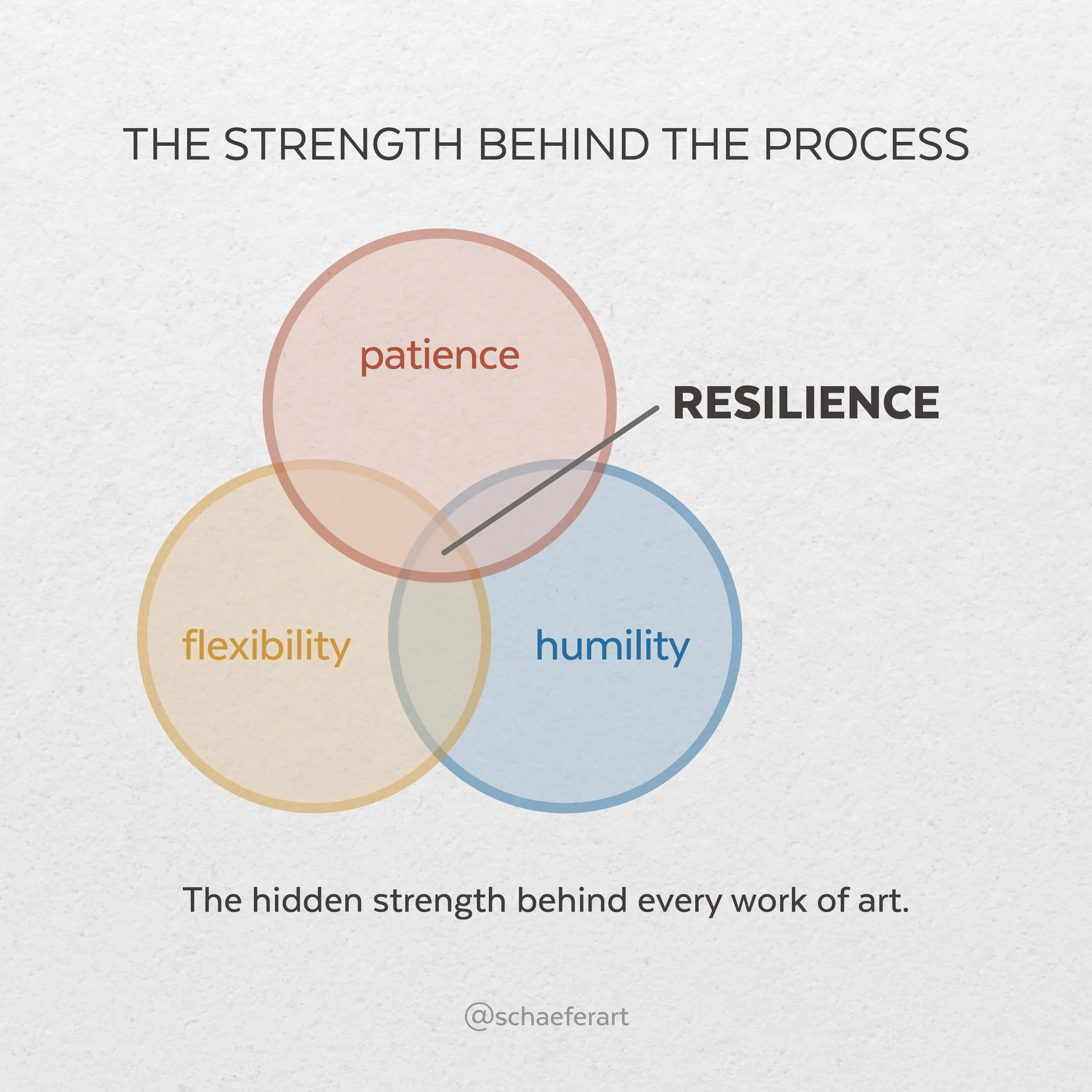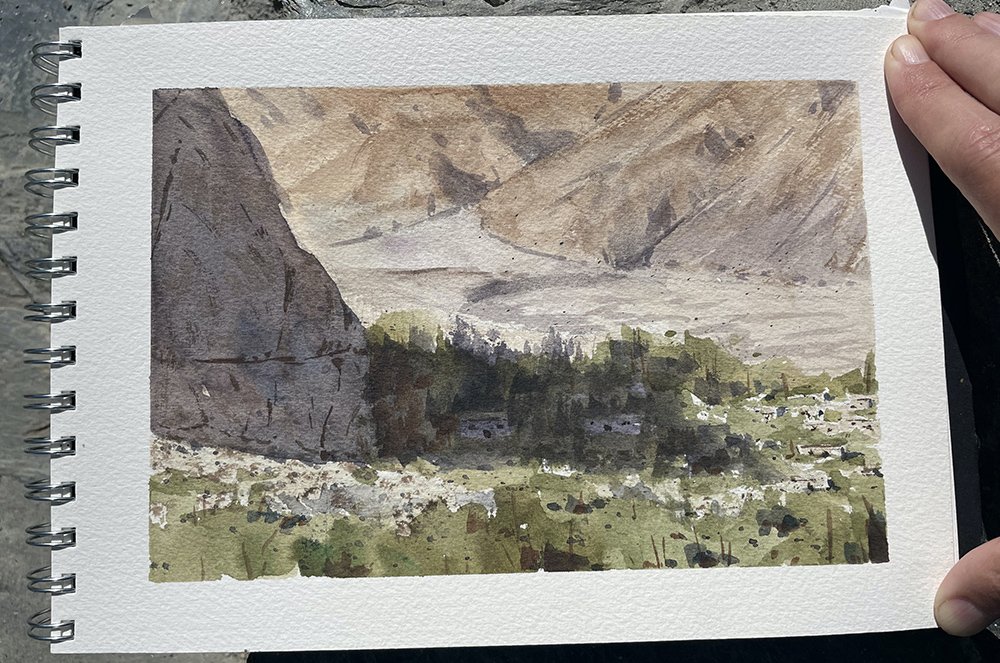Gamvar Varnish and Acrylic Paintings
After I wrote a recent post about Varnishing Oil Paintings with Gamblin Gamvar, I received some questions regarding how to varnish acrylic paintings. I don't really work with acrylics anymore but I do have some acrylic paintings laying around from a few years ago. So, I decided to experiment with a small painting - my first still life painted from life. On Gamblin's site it states that Gamvar can be used on oil and acrylic paintings and that Gamvar can be easily removed with Gamsol in the future when needed. So I decided to test this method on acrylic paintings to see how the paint would react or hold up to the Gamsol. Would I have to put an isolation layer on the acrylic painting before varnishing? Would the Gamsol ruin the paint layer? These were questions I had and wanted to find answers to.
I varnished this painting about 2 days ago using the same method outlined in this post: Varnishing Oil Paintings with Gamblin Gamvar. It was dry after 2 days no problem.
I used Gamsol, some cotton balls, a paper towel and an eye dropper. The cotton balls actually weren't the best idea. I'd recommend using some kind of low-lint cloth if you have any laying around, old t-shirt, etc. Paper towel isn't the best either but I used it quite lightly to minimize fibers coming off.
I then began to remove the varnish but only for half the painting, so the results would be more dramatic for this experiment. I started by using the eye dropper and placed some drops of Gamsol on half of the painting and then spread it around using the paper towel.
I let it sit for a minute or two and then rubbed it off best I could with the dry side of the paper towel.
Give it a few more minutes and you should notice a difference in surface quality - the varnish should be removed and that side of the painting should be matte, not glossy like the varnish. You can see a subtle difference in the photos below.
No paint was removed and the paint layer seems unharmed. And the varnish is removed! It would seem to me that Gamvar is perfectly fine to use with acrylics and there isn't much to worry about when the varnished needs to be removed in the far future for cleaning and reapplication. Hope you found this experiment helpful.
Why Use Gamvar instead of other Varnishes?
I've used and have tried other varnishes in the past and I haven't found one as good or as easy to use as Gamvar. When you use it correctly, only minimal varnish is needed to cover the surface so the bottle will last a while and also you don't have to worry about streaks in the varnish. If you have brush streaks while using Gamvar, you are using way too much. It's also easy to remove with just Gamsol. Gamvar can be applied once your painting is dry to the touch and it will not yellow in time. These are just a few reasons why I use it.
This post is not sponsored by Gamblin or anything like that - I'm simply just stating my opinion about a product that I fine to be of great quality. Have fun with your painting and varnishing.
[Note: Some of the links in the paragraphs above are affiliate links which help me to create new content and keep this site running. I am not sponsored by any brands or companies.]

I am an artist, writer, and instructor. As a previous graphic designer for a healthcare management business, I now teach drawing, painting, and discovering your passion with art.
When You’re Ready, Here’s How I Can Help You:
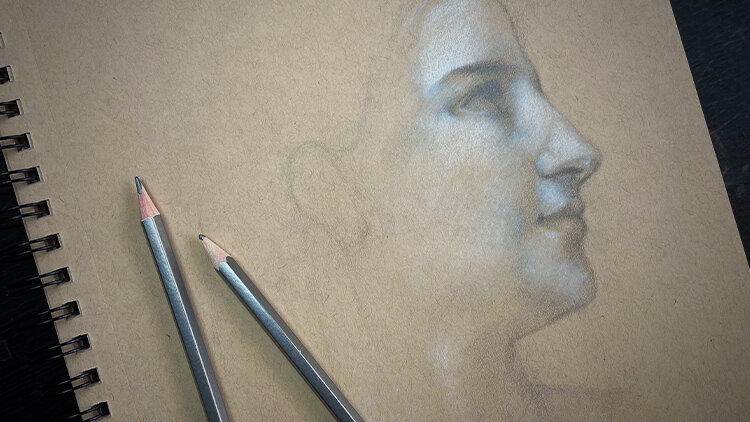
Unlock your artistic potential and learn to draw with confidence using the Intuitive Drawing method. From your first sketch to creating realistic drawings and subjects.


